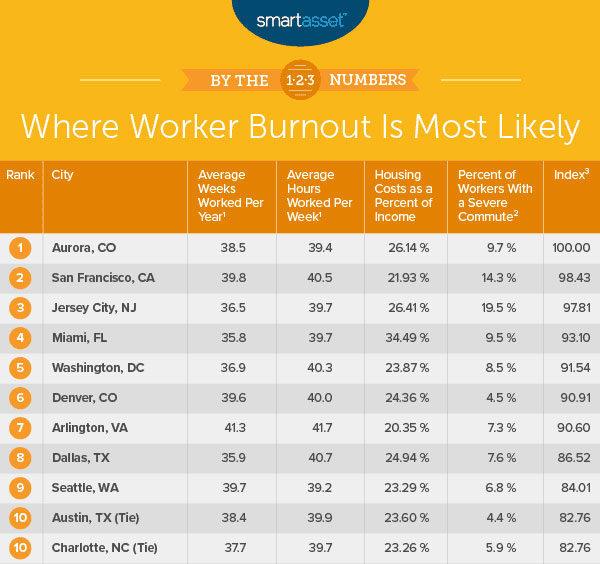(Updated at 3:35 p.m.) The pandemic has made work more stressful for many.
There are those in jobs that require in-person interaction, presenting a health risk. There are workers staying at home but juggling new-found childcare duties. And there are those who — whether to make ends meet or to keep up with the shifting demands of a COVID-19 world — find themselves working longer hours than ever.
Unfortunately for Arlington residents, the county was already a place where workers were predisposed for burnout, according to a new study.
The website SmartAsset has ranked Arlington No. 7 on its 2020 list of places “where worker burnout is more likely.” While not quite as burnout-prone as San Francisco or D.C., according to the list, Arlington still ranks ahead of Dallas and fellow Amazon office locations Austin and Seattle.
Among the major data points used by SmartAsset to crunch the numbers among 100 of the largest U.S. locales are average hours worked per week, and average weeks worked per year. At 41.7 hours and 41.3 weeks, Arlington was at the top of the list for both. The county ranked lower overall due to lower housing costs as a percent of income, and a lower portion of workers with a “severe commute.”
The trend of working longer goes well beyond Arlington.
“The days of a strict 40-hour workweek, with evenings and weekends spent relaxing, are a distant memory for many people,” SmartAsset said. “More than 10 million Americans work at least 60 hours per week and recent data shows that people are working three hours more per day during coronavirus lockdowns than they were prior to the pandemic.”
Separately, a local consulting firm released the results of a survey about COVID-19 Burnout Survey.
“As the U.S. prepares to celebrate Labor Day, national polling of the U.S. workforce indicates a majority of employees are burnt out (58 percent), up from 45 percent in the early days of the COVID-19 pandemic,” said Crystal City-based Eagle Hill Consulting. “Among employees who report burnout, 35 percent say it is attributable to COVID-19 circumstances, up from 25 percent in April.”
The surveys were conducted from April 8-10 and August 13-17.
“Labor Day can serve as an inflection point for employers to re-calibrate with their workforce,” said Melissa Jezior, president and CEO of Eagle Hill Consulting. “This level of burnout is problematic and could increase as millions of employees continue to work from home, and many schools remain unable to fully open. We’re in this pandemic for the long haul, and employers have got to find a way to make workloads sustainable for employees and better equip managers to lead. Otherwise, companies risk harming their bottom line and brand.”


